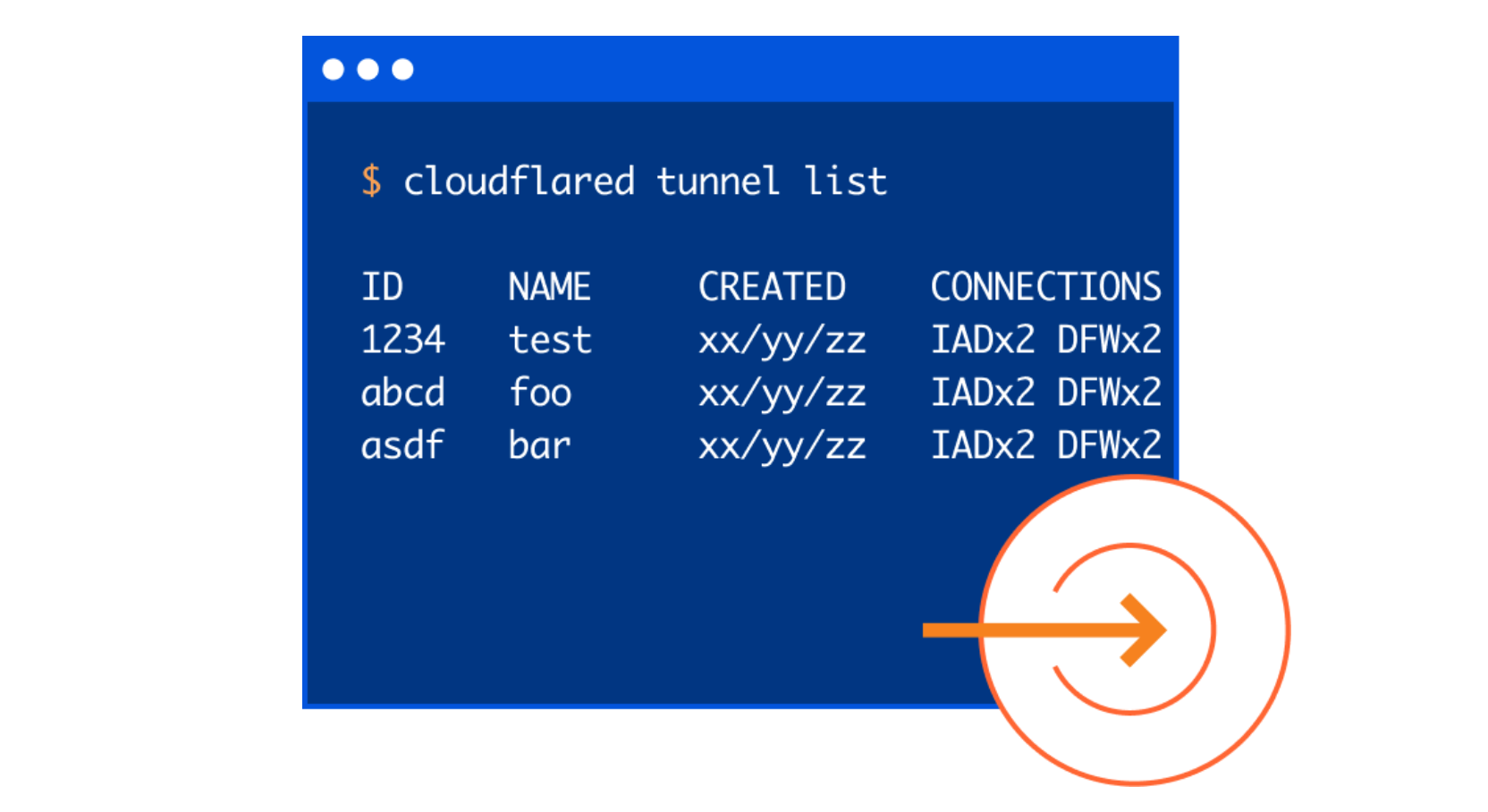Tunnel: Cloudflare’s Newest Homeowner

Cloudflare Tunnel connects your infrastructure to Cloudflare. Your team runs a lightweight connector in your environment, cloudflared, and services can reach Cloudflare and your audience through an outbound-only connection without the need for opening up holes in your firewall.

Whether the services are internal apps protected with Zero Trust policies, websites running in Kubernetes clusters in a public cloud environment, or a hobbyist project on a Raspberry Pi — Cloudflare Tunnel provides a stable, secure, and highly performant way to serve traffic.
Starting today, with our new UI in the Cloudflare for Teams Dashboard, users who deploy and manage Cloudflare Tunnel at scale now have easier visibility into their tunnels’ status, routes, uptime, connectors, cloudflared version, and much more. On the Teams Dashboard you will also find an interactive guide that walks you through setting up your first tunnel.
Getting Started with Tunnel

We wanted to start by making the tunnel onboarding process more transparent for users. We understand that not all users are intimately familiar with the command line nor are they deploying tunnel in an environment or OS they’re most comfortable with. To alleviate that burden, we designed a comprehensive onboarding guide with pathways for MacOS, Continue reading
netsim-tools: Start a Virtual Lab with a Single Command
In mid-October I finally found time to add the icing to the netsim-tools cake: netlab up command takes a lab topology and does everything needed to have a running virtual lab:
- Create Vagrantfile or containerlab topology file
- Create Ansible inventory
- Start the lab with vagrant up or containerlab deploy
- Deploy device configurations, from LLDP and interface addressing to routing protocols and Segment Routing
Start a Virtual Lab with a Single Command
In mid-October I finally found time to add the icing to the netlab cake: netlab up command takes a lab topology and does everything needed to have a running virtual lab:
- Create Vagrantfile or containerlab topology file
- Create Ansible inventory
- Start the lab with vagrant up or containerlab deploy
- Deploy device configurations, from LLDP and interface addressing to routing protocols and Segment Routing
Worth Reading: The Software Industry IS STILL the Problem
Every other blue moon someone writes (yet another) article along the lines of professional liability would solve so many broken things in the IT industry. This time it’s Poul-Henning Kamp of the FreeBSD and Varnish fame with The Software Industry IS STILL the Problem. Unfortunately it’s just another stab at the windmills considering how much money that industry pours into lobbying.
Worth Reading: The Software Industry IS STILL the Problem
Every other blue moon someone writes (yet another) article along the lines of professional liability would solve so many broken things in the IT industry. This time it’s Poul-Henning Kamp of the FreeBSD and Varnish fame with The Software Industry IS STILL the Problem. Unfortunately it’s just another stab at the windmills considering how much money that industry pours into lobbying.
MUST READ: ARP Problems in EVPN
Decades ago there was a trick question on the CCIE exam exploring the intricate relationships between MAC and ARP table. I always understood the explanation for about 10 minutes and then I was back to I knew why that’s true, but now I lost it.
Fast forward 20 years, and we’re still seeing the same challenges, this time in EVPN networks using in-subnet proxy ARP. For more details, read the excellent ARP problems in EVPN article by Dmytro Shypovalov (I understood the problem after reading the article, and now it’s all a blur 🤷♂️).
MUST READ: ARP Problems in EVPN
Decades ago there was a trick question on the CCIE exam exploring the intricate relationships between MAC and ARP table. I always understood the explanation for about 10 minutes and then I was back to I knew why that’s true, but now I lost it.
Fast forward 20 years, and we’re still seeing the same challenges, this time in EVPN networks using in-subnet proxy ARP. For more details, read the excellent ARP problems in EVPN article by Dmytro Shypovalov (I understood the problem after reading the article, and now it’s all a blur 🤷♂️).
DNSSEC with RSA-4096 keys
The role of cryptography is to keep one step ahead of advances in computing capability. One response is to keep using the same algorithm, but extend the key lengths. Here we look at the viability of DNSSEC when we use a 4,096-bit RSA key.Heavy Networking 602: All About SPF, DKIM, DMARC Email Security
Today on Heavy Networking, all about improving email security with SPF (Sender Policy Framework), DMARC (Domain-based Message Authentication, Reporting & Conformance), and DKIM (Domain Keys Identified Mail). Our guest is Alex Blackie. He wrote an article on Email Authenticity 101 that I thought explained these topics really well. If you're a domain manager, you should listen to this one, even if you don't route mail through your domain. You can keep the bad guys from spamming in your name!
The post Heavy Networking 602: All About SPF, DKIM, DMARC Email Security appeared first on Packet Pushers.
Heavy Networking 602: All About SPF, DKIM, DMARC Email Security
Today on Heavy Networking, all about improving email security with SPF (Sender Policy Framework), DMARC (Domain-based Message Authentication, Reporting & Conformance), and DKIM (Domain Keys Identified Mail). Our guest is Alex Blackie. He wrote an article on Email Authenticity 101 that I thought explained these topics really well. If you're a domain manager, you should listen to this one, even if you don't route mail through your domain. You can keep the bad guys from spamming in your name!Choosing the Least Incorrect Answer

My son was complaining to me the other day that he missed on question on a multiple choice quiz in his class and he got a low B grade instead of getting a perfect score. When I asked him why he was frustrated he told me, “Because it was easy and I missed it. But I think the question was wrong.” As usual, I pressed him further to explain his reasoning and found out that the question was indeed ambiguous but the answer choices were pretty obviously wrong all over. He asked me why someone would write a test like that. Which is how he got a big lesson on writing test questions.
Spin the Wheel
When you write a multiple choice test question for any reputable exam you are supposed to pick “wrong” answers, known as distractors, that ensure that the candidate doesn’t have a better than 25% chance of guessing the correct answer. You’ve probably seen this before because you took some kind of simple quiz that had answers that were completely wrong to the point of being easy to pick out. Those quizzes are usually designed to be passed with the minimum amount of effort.